Today the group visited Oakwell Stadium – home of Barnsley Football Club. We were shown around by Dave Hancock (DH) the BFC Academy Manager, Dave’s many years of experience were evident in his insightful yet down to earth approach to the subject of the running of a football club and sport’s stadium.
We entered into the stadium which has an approximate capacity of 23,500, with the smallest stand (West Stand) holding 1,500 spectators, and the largest stand (East Stand) holding 12,000, the remaining 10,000 seats are divided between the behind goal stands – 6,000 in the ‘Away’ North Stand, and 4,000 in the Enterprise Stand.

The North Stand

The group walk from the East to the North Stand

We then visited the East Stand ground floor concourse, which was a concreted area that on match days has franchise run bar / catering facilities and a bookmakers. The catering is currently run on a franchise basis partly due to the low profit margins. DH informed us that on match days this is a busy area that is accessed through turnstiles and monitored by stewards.
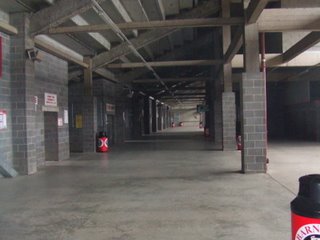
The East Stand Lower Concourse
DH informed us that football fans are fickle and results orientated, if the team have a losing streak (and they are currently 5th from the
bottom of the division after losing to local rivals Sheffield Wednesday) attendances can drop dramatically. The club has 4,500 hard core fans (fan is an abbreviation of fanatic) who come irrespective of how the team are playing or what division they are in, and has sold 5,000 season tickets this season. Outside of the hardcore fans the majority of the rest of the supporters come to be entertained – if they entertainment is poor, they may not come back again. When Barnsley were
in the Premier League (97-98 season) attendances were on average between 17,000 and 18,000. When the club were relegated attendances dropped to around 12,000, and when they were relegated again into league one attendances dropped to just 7,000.
In May 2006 Barnsley reached the play off final in Cardiff against Swansea City, which Barnsley won 4-3 on penalties, 25,000 Barnsley fans
travelled down to South Wales, now the team are back in the Coca Cola championship attendances are averaging at around 10,000. This is evidence enough that a healthy fan base is there, and are present when the results are going the teams way.
Football can be an expensive day out, with entry prices at Oakwell betwee
n £18 - £22 per adult, and a bottle of water costing £1.80 – many of the local population simply cannot afford to partake in this on a regular basis. On the East Stand lower concourse there were empty advertising boards (unsold marketing space), DH told us that selling marketing space can be problematic as it is not only tied to results, they are now competing with other local sports teams (and not just football). DH stressed that there is a real need to get the youngsters in early so that they become fans at an early age and choose Barnsley FC as thei
r preferr
ed team to other local rivals (Doncaster Rovers, R
otherham United, S
heffield United, Sheffield Wednesday, Huddersfield Town and Leeds United). This helps protect future income streams from youngsters when they grow up, and their parents as they do. As part of this strategy the club is offering a free child ticket if a parent buys a ticket to the upcoming Coventry home game.
When asked about the fan culture and atmosphere on match days DH was quick to inform the group that trouble was rare and only a very small minority were responsible for most of it, including racism. He did say that at away games the atmosphere can be threatening. There is a large drinking culture amongst many football supporters, the East Stand catered for this with bars on two of the tiers, and a possible third bar for ‘members’ that may at
some point be built in-between the current levels. For families who want to be in a safer environment there is a dedicated family area in the upper tier of the East Stand. By law alcohol can only be consumed at a football match if you are not in view of the pitch, so drinking takes place on the concourse areas.
We then went upstairs to the East Stand executive suite, where executive boxes that hold approximately ten people are sold for £8,000 per season – all of the current executive boxes are sold. The catering facilities in the executive area are also franchised out to a local firm called Brooklands. On match days
executive box holders receive complimentary tea, coffee and sandwiches – if any other refreshments are required they must be paid for. The executive suite also plays host to other hospitality events such as wedding receptions and theme nights.

The Executive Suite
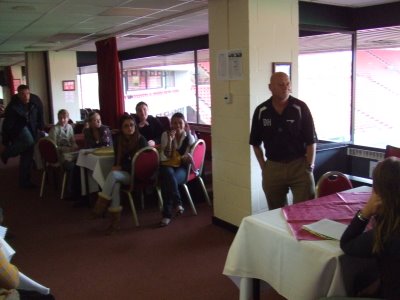 DH addresses the group
DH addresses the group
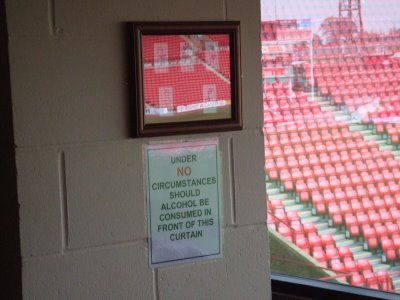
The Executive Suite has a bar, but there are strict legal rules governing the consumption of alcohol within it.
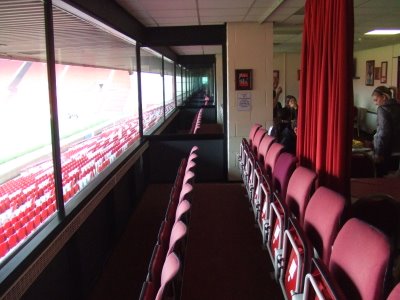
Financially the club is now ‘in the black’ after spending a period of time in financial difficulty, which included a period in administration with debts of £5 million. This was attributed (amongst other things) to the collapse of ITV Digital and the loss of television revenue, as well as players that were signed on high wages during the Premier League season that were given long contracts. In order to redress this the club restructured much of its staffing, this included the number of coaching staff being reduced from thirty to twelve, the scouting budget being considerably slashed and many staff working on seasonal contracts. There is also a ‘no wastage’ policy in operation which includes the last person leaving the room turning the lights off. In terms of budgeting for a season, the club budgets for being knocked out in the first round of all cups (FA Cup, Carling Cup) – if the club subsequently has a decent run of games in the cup competitions this translates to extra money.
In terms of culture DH spoke of Barnsley as a caring club that nurtures it’s young academy recruits who come aged six and above, and can sign for a club from the age of nine onwards. 96% of those who come from the academy do not make it as professional footballers – when asked if this made the academy financially viable DH pointed out that in the current first team there are ten academy players. If an academy youngster is not offered a professional contract, the club and the Professional Footballers Association help them to find an education programme so that they can retrain along a new career path. Five years ago the Barnsley academy was regarded as one of the best in the country, when the club were in financial difficulty cutbacks had to be made and the academy’s rating dropped, although it is now back on the up again. We were given a tour of the academy including the changing rooms (adorned with motivational words) training pitches and impressive indoor training area. The club also have astro turf pitches – however they do not use these for players now due to the harmful effects of astro turf on the joints. These are now hired out to the public at £35 per hour which generates the club a revenue of between £50,000 and £60,000 per year.
The tour ended at the club shop, which sold a range of branded BFC goods and is the only seller of official BFC merchandise, BFC replica shirts and kits are not sold at any other sports shops.
Many thanks to Barnsley FC especially Dave Hancock for a very insightful talk, and Don Rowing for making the visit possible.
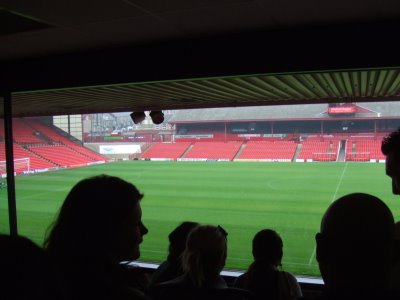
The group view the pitch from the Executive Suite

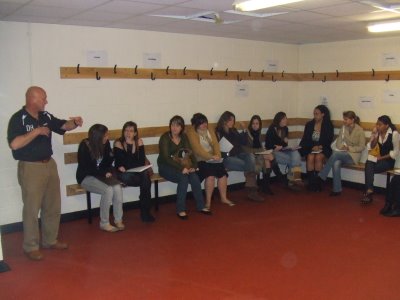 The Academy dressing room - top the walls are adorned with motivational words, below DH gives the group a team talk.
The Academy dressing room - top the walls are adorned with motivational words, below DH gives the group a team talk.

The player's gym
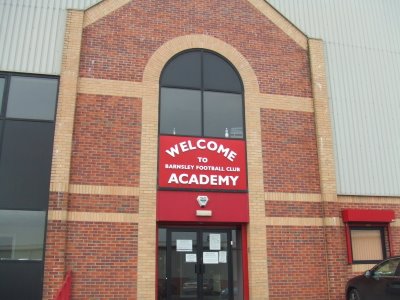
The Academy entrance
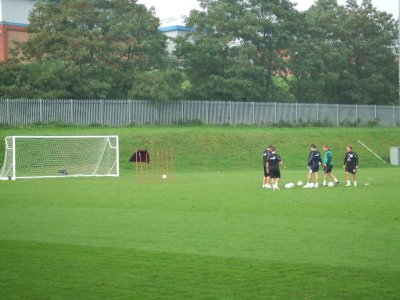 The first team in training
The first team in training
 The indoor academy pitch
The indoor academy pitch





 A meerkat
A meerkat 




 Above, the girls get to grips with some of Tropical World's residents.
Above, the girls get to grips with some of Tropical World's residents.

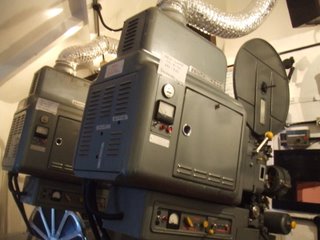
 The seats, and screen covered with the curtain - the clock is to the right of the screen
The seats, and screen covered with the curtain - the clock is to the right of the screen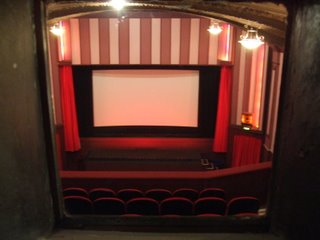






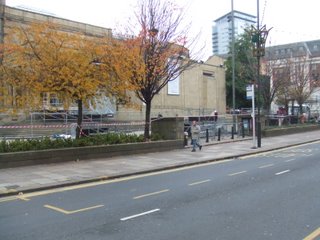


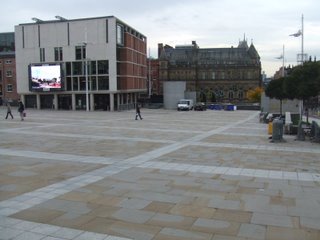







 A variety of galleries and displays
A variety of galleries and displays











 DH addresses the group
DH addresses the group



 The Academy dressing room - top the walls are adorned with motivational words, below DH gives the group a team talk.
The Academy dressing room - top the walls are adorned with motivational words, below DH gives the group a team talk.

 The first team in training
The first team in training The indoor academy pitch
The indoor academy pitch